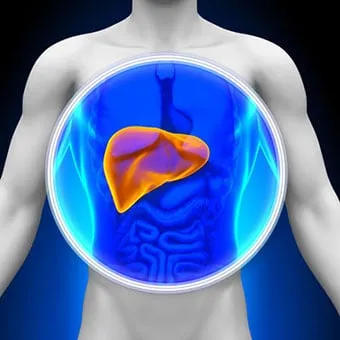According to research, 6 to 7% of the world’s population has liver fibrosis and is unaware of it because there are no symptoms. That’s why many people develop serious liver complications.
What is liver fibrosis?
Liver fibrosis develops when scar tissue builds up in the organ due to repeated or long-term damage or inflammation. Fibrosis can develop as a result of almost any chronic liver disease.
Unlike healthy liver cells, scar tissue cells are unable to self-repair or work in any other way. Fibrosis can lower overall liver function and limit the organ’s regenerative capacity.
Scar tissue caused by fibrosis can also obstruct or restrict blood flow within the liver. It can starve and eventually kill healthy liver cells, resulting in additional scar tissue.
Treating infections, changing one’s lifestyle, and taking medications are all common treatments. Mild to moderate liver fibrosis can often be reversed with treatment.
If the inflammation persists, potentially due to a lack of treatment, liver fibrosis can progress to more severe liver diseases. Timely treatment from a liver specialist in Mumbai can help you overcome fibrosis.
Symptoms of liver fibrosis
In the mild to moderate phases of liver fibrosis, doctors rarely diagnose it. It is because signs of liver fibrosis normally don’t appear until more of the liver has been damaged.
When a person’s liver condition progresses, they may experience the following symptoms:
- Loss of appetite
- Weakness
- Nausea
- Jaundice
- Unexplained weight loss
- Having trouble thinking clearly
- An accumulation of fluid in the legs or stomach
Tests used to diagnose fibrosis
Liver biopsy
If your doctor suspects liver fibrosis, they will ask you to undergo a biopsy. The doctor will use a big needle to safely extract a tiny tissue sample from the liver during the biopsy.
The sample will then be examined under a microscope by a pathologist, a doctor specializing in determining the ailment source. It helps determine the type and extent of the damage.
Since the pathologists only have a limited sample to work with, determining the degree of fibrosis is difficult. The same sample can be evaluated in a variety of ways by different doctors.
To classify the stages of fibrosis, healthcare providers might employ a variety of scales. The Ishak, Metavir, and Batts–Ludwig scales are among these.
These and other scoring systems consider the impact of fibrosis on the portal vein that transports blood from the intestines to the liver. Some scales also count the fibrous bands of tissue (septa) in the biopsy sample and the extent of fibrosis.
Liver Elastography
Another alternative is to do a transient elastography imaging test called fibroscan. It determines the stiffness of the liver. The damaged cells in a person’s liver stiffen it when they have liver fibrosis.
Low-frequency sound waves are used in this examination to assess the degree of fibrosis or scarring that may be present in your liver as a result of a variety of diseases.
Your gastroenterologist will then utilize this information to personalize and optimize your treatment approach. Fibroscan can be used instead of a liver biopsy in some cases.
Liver elastography is recommended if you have any of these liver conditions:
- Non-alcoholic steatohepatitis
- Hepatitis B
- Hepatitis C
- Autoimmune hepatitis
- Alcoholic liver disease
- Cirrhosis
- Genetic diseases like Wilson’s disease
Nonsurgical tests
Doctors do use non-invasive tests to determine the likelihood of a person having liver fibrosis. These blood tests are usually recommended to people with chronic hepatitis C infections who are at a higher risk of developing liver fibrosis due to their illness.
Some of these blood tests are:
- Tissue inhibitor of matrix metalloproteinase-1 (TIMP-1)
- Matrix metalloproteinase-1 (MMP)
- Serum hyaluronate
Further, the doctor may also use calculations-intensive tests that examine six different liver function markers and put them into an algorithm before providing a score.
Outlook
Cirrhosis of the liver is one of the main causes of death worldwide. As a result, a person with liver fibrosis must be detected and treated as soon as possible before it advances to liver cirrhosis.
However, if a person’s liver fibrosis progresses to the point where it is extremely scarred and no longer functions, the only option is to have a liver transplant.
In such a circumstance, you should immediately contact an experienced liver transplant surgeon in Mumbai like Dr. Gaurav Gupta, who provides one of the best liver transplant in Mumbai.

